- Joined
- Aug 8, 2008
- Messages
- 6,070
- Points
- 83
https://mil.news.sina.com.cn/china/2019-05-19/doc-ihvhiews2913861.shtml
华为"芯片自主"有何意义?或成下代防空系统关键一环
华为"芯片自主"有何意义?或成下代防空系统关键一环
586
本周,中美贸易战升级,美国把卡华为的脖子作为一张关键性的“牌”打了出来。而华为毫不示弱宣布将实现独立自主,事实上多年来,商业芯片领域除了美国之外的厂商一直在憋着劲要造美国的反,但始终因为风险等因素而没有付诸实施……现在有带头的了。有一位相关领域的朋友预言,美国媒体迟早会用《庞贝逼凯撒跨过卢比孔河》为标题来形容这一事件。

凯撒越过卢比孔河进军罗马,而其政敌庞贝此前所幻想的,各地贵族纷纷站在自己一边对抗凯撒的情况却根本没有出现……
今天我们要谈的话题,也与此有关。
首先我们说一件看似无关的消息,在本周普京视察俄罗斯南部军区空天军防空系统的新闻中,首次证实了S-350和S-300V4防空导弹系统都被归入俄罗斯空天军作战序列,而不再属于陆军集团军。
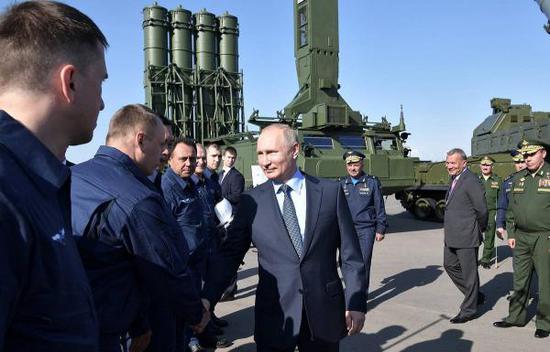
普京视察S-300V4导弹系统
同时,有俄罗斯官员就陆军防空系统问题接受采访的时候,也提到由于其陆军现役主力新型防空系统,“铠甲S1”在叙利亚战场表现出了一系列弱点,已经不适应现代战争的需求,俄军将以一种新型的“铠甲SM”防空系统将其替换,而现役的铠甲S1,将会低价出售给友好国家。
现代的防空作战正面临着空前的巨大压力,传统上来说,防空系统的作战效能经常被形容为:“防空,防空,十防九空”,因为即使是最现代化的S-400防空导弹系统,号称有着400公里的最大射程,对高机动敌机的有效打击距离也可达到100-200公里。但实际上,由于敌机可以采用电子对抗、机动摆脱等方法进行对抗,其实战的命中率也是不会高到哪里去的。
不过呢,“十防九空”对于空袭一方来说已经不是开玩笑的事情了,早在二战中进行战略空袭的时候,美英就计算过,如果单次空袭的折损率超过5%,那么空袭行动就无法继续进行下去。
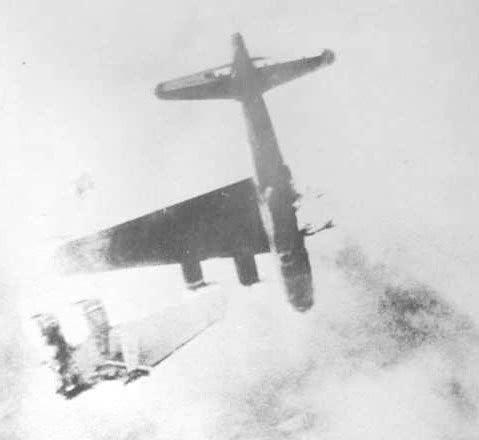
防空是个麻烦的问题,“十防九空”其实已经足以让对手无法长期实施空袭行动
实际上,冷战以来历次战争中,单次空袭行动的损失率基本都是远低于“十防九空”的。
实际上,现代防空系统对于重要目标的防御采用的是多层次的防御,从战斗机、远程防空、中程防空、近程防空导弹、肩扛式防空导弹,到最后的近防炮,确保敌方的空袭兵器要面临多种打击方式,多种探测方式的联合打击。只有在这样的防御之下,让敌机多次经历“十防九空”,才能真正有效掩护关键目标。
要实施这样的防御,前提条件是足够的纵深,也就是“距离的暴政”,需要有足够的空间来部署这些多层次的防空反导拦截手段。
同时,还要求能够将这些系统全部结合成一个整体的防空指挥控制网络。
我们之前说过多次,这种系统到目前为止仍是少数大国所专有的,对于大部分中小国家而言,其防空系统可能最好也只能做到相当于大国国土防空系统中某一个局部的水平。
但是这种防御能力,截至目前,还只是针对本国国内的关键目标,比如重要政治、经济、军事中心城市,核武器基地、关键的工业设施、关键军事设施、战略级指挥中心、关键交通中枢……当然,在冷战时代,即使是如此严密的多层次防御,面对洲际弹道导弹的威胁,终究是防不胜防。
当然了,对于中美俄这样的大国,随着新体制雷达、卫星红外探测技术、地面部署的远程红外探测系统、激光雷达、甚至是光子雷达这类目前尚在探索阶段的新技术,以及更加先进的远程防空反导导弹系统,乃至激光防空反导系统的出现,国土防空网的效果也是与时俱进,甚至连洲际导弹,对于今天以及近未来的中美俄来说,也不是毫无防御能力的了。尽管从总体来说,这种防御仍然是“十防九空”,而对手的洲际导弹只要有一发突防成功,就可以造成无法承受的损失——因此即使在这种环境下,阻止这种终极空袭手段的唯一有效方法,还是自己也有洲际导弹,能够实现“恐怖平衡”。
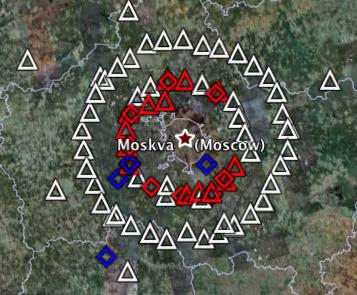
莫斯科周边的防空系统阵地位置示意图
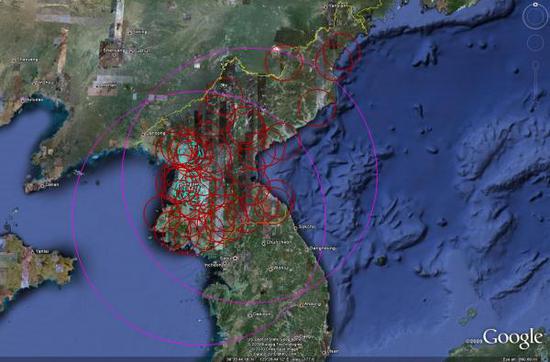
朝鲜防空系统示意图,虽然看起来也是密密麻麻,但是实际上由于技术落后,真正的防御效能很有限
所以,讨论防空系统有效性问题,还是主要考虑在常规战争环境下——不过由于现代精确打击系统的效能,实际上大规模的精确打击效能已经不亚于核打击,所以击退敌方大规模精确打击,就成了防空系统必须面临的关键问题。而精确打击之所以难防,就在于每一发突防的弹药,都可能给防御方造成沉重的打击,所以“十防九空”是不行的,必须尽可能提高防御的效率。因此对于大国而言,严密的多层次国土防空系统依然具有着重要的战略价值,只不过其防御的重点不再是敌人的战略核轰炸机,而是大规模的精确空袭。
可惜,对于一些中小国家而言,他们根本不具备建立这类防御的前提,所以在敌方的战略空袭之下,其防空系统最终会被层层瓦解,最终导致其国家机器的瓦解,最终只能选择屈服于拥有强大空中优势的敌人。咱们刚刚纪念过的1999年最终导致南联盟灰飞烟灭的那场空袭就是最好的例证。
不过在近几年的战争和冲突中,我们看到了一种新的模式的可能性——这就是野战防空系统和中小国家国土防空的“游击化”。
在也门,通过部署技术性能一般般,但是具备高度机动性,隐蔽性的防空导弹武器系统,胡赛武装不停给沙特为首的海湾国家联军空袭部队制造损失——虽然还没有到能让对手空中攻势破产的程度,但这种杀之不绝的防空作战能力还是让对手头痛不已。
但是不论是也门胡塞武装还是叙利亚“非国家行为主体”(恐怖组织),虽然都有使用防空游击战不断给其对手制造损失的能力,但却无法实现积小胜为大胜——因为其击落对手飞机的概率,仍然远在千分之一以下级别。
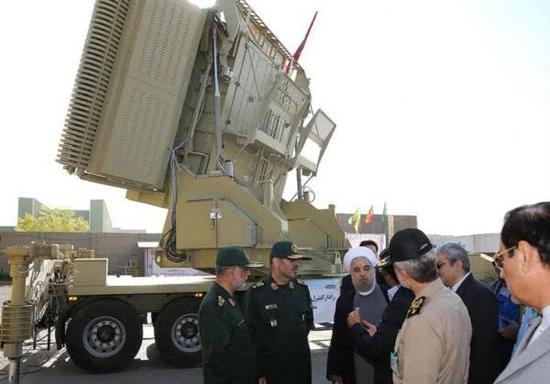
即使是伊朗也在积极研制本国的防空系统和传感器
所以,胡塞武装也只不过是验证了近年来一些专家所提出的一个观点——能够独立作战的近程高性能防空系统的生存力优势。
在传统的防空系统中,防空系统主要依靠远程 雷警戒达,掌握大范围空情。这类远程警戒雷达通常只能掌握中高空目标的信息,同时测量目标精度也无法直接作为火控数据使用,只能用来引导战斗机进行拦截,或者更加精确,也更加高价值的雷达在更合适的时机来开机掌握目标精确信息,引导导弹攻击。
事实上一部分的预警机和这些远程警戒雷达的作用是相似的,即使是最先进的预警机也一定程度上要扮演相似的角色,只不过预警机因为高度更大,对低空目标也有一定的探测能力(当然,前提是有较好的地面杂波处理能力)。
在冷战时代的空地对抗中,一般很少对这类雷达进行打击,因为它们通常隐蔽在纵深的位置,会有其他的防空系统进行保护,而且对其进行打击的效果也不好,因为此类雷达通常相对而言比较简单,庞大,仅仅摧毁其天线,很快就能修复。
而到了现代环境下,一方面飞机可以通过低空飞行避免被过早发现,另一方面隐身飞机、高速远程反辐射导弹,乃至通过在战区联合作战体制下,调用战术导弹也可以用来打击这类雷达。同时精确打击技术也大大提高了打击的有效性——因此远程警戒雷达在很多环境下也已经不再安全——前段时间我国出售的一部远程警戒雷达在叙利亚被以色列空军炸毁,台湾媒体还一顿欢呼,说大陆的反隐身雷达被破功什么的……但事实上这仅仅是现代环境下远程警戒雷达系统脆弱性的一个验证罢了。
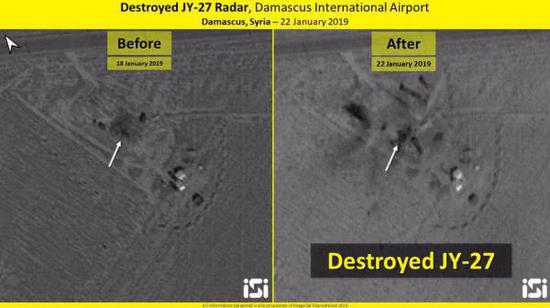
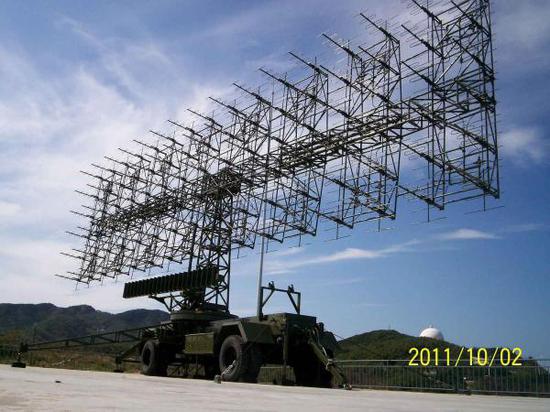
对于小国来说,在技术优势的对手空袭下,保护远程警戒雷达基本是不可能的,因为这类雷达不大可能机动部署,只能是靠背后有大国支持,被炸了再补充……
当然,虽然这类远程警戒雷达的生存环境更加恶劣了,但是对于大国的完整防空网来说它依然不可或缺,而且在严密的多层次防空掩护下,它也仍有相当的生存力。但是如果是在前线野战,或者中小国家防空系统中,这个问题已经非常严重,甚至无解。
那么,是否能用一种相对廉价的手段,在一定程度上取代远程警戒雷达,获得较大范围的空情信息呢?
曾经有过不少设想,例如,被动雷达,即通过对环境中电磁波的探测,寻找空中目标干扰和影响环境中电磁波的迹象,然后反推目标空中位置,事实上这类产品我国也制造了出来,这类设备能够有效探测到数百公里范围内的空中目标,而它本身并不发射任何电子信号,所以实际上对方也无从探测。但这种设备的探测距离仍有较大限制,大约为100-200公里,而且误差很大,大到基本上只能知道天上有一群目标在某个方向的程度,这就限制了它的实用意义。
而类似的其他一些系统,目前也并不理想。
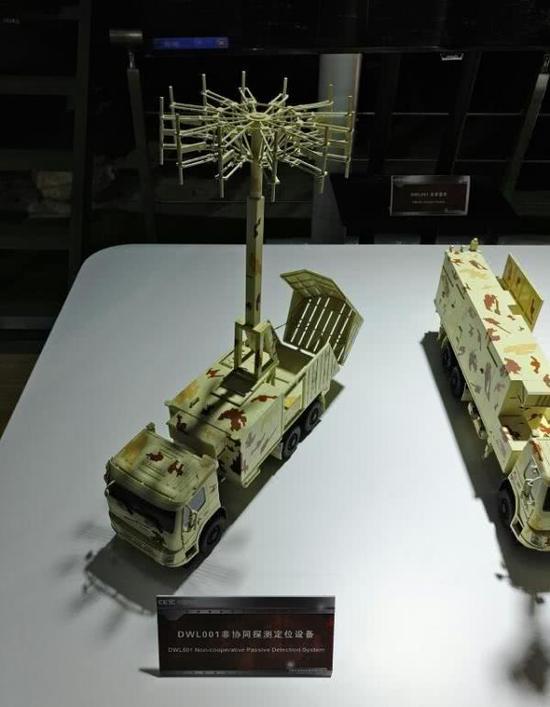
被动雷达技术近年来也在进步,不过它并不具备取代远程警戒雷达的能力
而目前在这方面较为理想,且可以用于前线防空和纵深较小的防空系统的一种方法是通过让雷达和其他传感器,比如光电传感器,组网,每一部雷达的探测范围可能只有几十公里,网中的雷达交替开机,获得一部分的空情信息。敌人摧毁一部雷达,对于整个网络而言只是损失一块“拼图”,可以由其他的雷达补网探测。
这样的技术其实冷战时代已经有了,而且如今也已经广泛使用,在叙利亚,其空情系统多多少少就是利用这样的方法来确保工作的。
而在未来,雷达组网技术将会更加发达,随着更加先进的雷达和更加强大的网络带宽,更强的数据处理能力被运用进来,它可以更快速的处理更复杂的空中情报,同时获得的空情信息更加完整,还能具备一些传统的雷达组网所不具备的能力,比如识破敌方电子对抗、搜索发现隐身目标等。
正是由于这种使用较小的雷达,覆盖较大空域的技术的出现和普及——雷达组网技术所需要的关键是信息系统的廉价化——我们前面说过,台湾购买美国Link16数据链终端机的价格是数百万美元一台,导致台军至今也无法真正在所有作战平台上普及这种数据链。
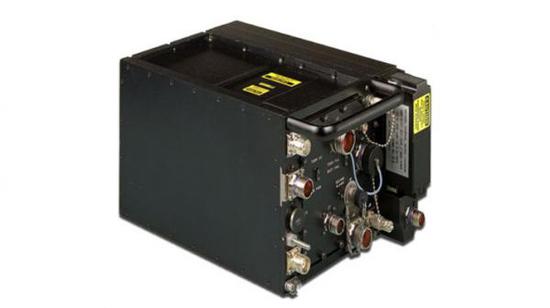
台湾购买LINK16终端价格惊人,这本身也表明了美国对台湾的一种态度,同时呢,台湾自我吹嘘的“高科技水平”在这方面就暴露无遗了

相比之下,大陆很多年前就已经有出口型数据链,类似的东西,有华为这样的通信巨头在,中国大陆会研制不好?呵呵
当然,更加廉价,有效的数据链系统目前也在层出不穷,凭借这些装备,更强大的雷达组网系统为防空系统的演变提供了条件。
这样的系统更适合作为野战防空和较小的国家和地区的国土防空系统使用,因为其更加去中心化,抗打击能力更强,尽管在一些能力上仍然存在缺陷——比如反导作战和对付高空高速目标——但这自有交给空军的远程防空系统去担心,在联合作战体系下,这类系统也一样可以用来掩护前线部队——当然这就需要更加高级的,联通三军的更强的网络系统了。
从这个角度我们不难看出,俄罗斯为何将射程可达400公里的S-300V4和S-400系统交给空天军了,虽然俄罗斯的信息化技术方面相对落后,但毕竟也是一个大国,它在这方面的水平可不是小国和地区可以相提并论的。
俄陆军野战防空未来就基本是使用射程数十公里的“山毛榉M3”为中远程防空系统,“铠甲SM”“道尔M3”为内层,再加上新型的57毫米自行高炮为最后防线的一套系统了。它主要依靠这些系统自身的雷达来掌握中低空的空情信息,形成一道松而不散,疏而不漏的防空网,主要拦截敌方低空作战飞机、直升机、各种智能弹药。
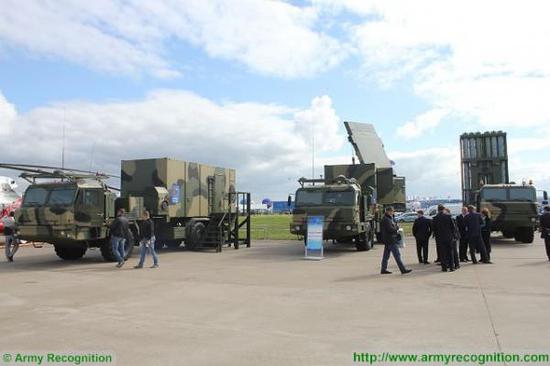
S-350系统在最简化的情况下连指挥车都可以不用,就一辆雷达车一辆发射车就可以作战,相比S-300、S-400简化不少
别看这套系统中的每一个子系统似乎比当年以S-300V打起的大防空伞小很多,但是由于实现数据互通,仍然能够覆盖整个战场空间,并取得更高的拦截效率。尤其是“铠甲SM”这样的系统将会具备“钉子”微型防空导弹,它将可以拦截包括迫击炮弹、榴弹炮弹药、火箭弹在内的敌方来袭目标,实际上作战效能将比此前的铠甲S1高得多,野战部队头上的防空其实更加先进了。
同时在这套系统下,由于整个防空系统被融合在一起,对目标不再有一个远程警戒雷达监视——导弹系统自身火控雷达测量获得数据的过程,而是直接探测到的目标就已经具备火控级的精度——因此一些超远程防空导弹也具备了更高的实战价值——比如S-400、S-300V4。另一方面,S-350这样的中程防空系统,在这种新概念体制下,具有了更高的价值,这类系统强调快打快收,而且其导弹性能非常高,具备极高的机动性和能量特性,在其射程内的敌机几乎不可能靠机动来躲避攻击。S-350还强调反导能力,其9M96导弹具备类似“爱国者3”导弹的高空高过载机动的反导能力。
这样一种能够机动游走的,在它发起攻击之前几乎隐身的中程防空系统,很大程度上要比S-400更难对付,因为就算再怎么训练,这种有多部雷达、发射车、指挥控制车组成的庞大复杂的系统,要机动起来仍然很费力。相比之下,S-350系统最简单只需一辆发射车和一辆雷达车就搞定了,机动起来自然非常省事。
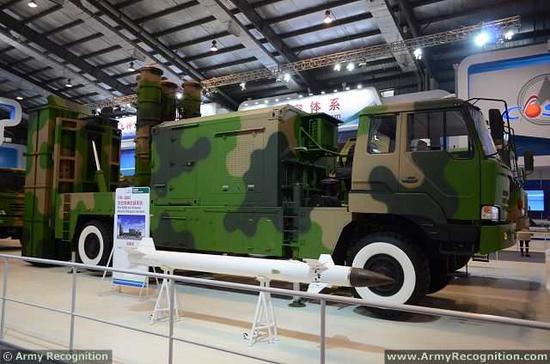
中国的FM-3000导弹作为一种外贸弹,与S-350系统有不少相似之处
所以说未来的防空系统,不管是野战防空、还是国土防空,都会比传统的防空系统更加灵活多变,更加分而不散,疏而不漏。
这还只是在信息化技术领域相对落后的俄罗斯呢。
美国目前在这一领域也已经探索的很深入,当然,过去20年,美国陆军对于空军掌握制空权,以及联合作战条件下的大规模远程打击能力过于有信心,认为自己能够通过大规模的空中打击首先压制和消灭敌方防空和远程打击能力,独家掌握第四代战斗机和数量庞大的三代战斗机足以消灭大部分敌方来袭目标,陆军自身似乎不必考虑野战防空问题——但现在看来已经完全不是这么回事。
所以美军现在也开始重视陆军野战防空问题,由于美国在信息化和电子技术方面的优势——事实上美国的军工厂商没有少搞类似的东西,只不过没有自用,而是大部分装备了以色列和欧洲国家。以色列的“铁穹”系统最近也在实战中再次展示了相当令人惊讶的防御效率,没有理由认为美国陆军在技术上会比这更加落后。
按照美军的构想,未来他们甚至将可以使用155毫米榴弹炮发射远程防空弹药——其实打击手段什么的,在现代防空系统中并不是最关键的问题,问题的关键是指挥控制系统和传感器系统,而美国在这方面显然可以迅速的加强起来。
解放军近年来已经建立了一套强大的野战防空系统,其主体是35毫米高炮、红旗-17、红旗-16导弹,而未来呢?从目前的外销防空系统来看,我们和美俄的思路也是类似的。
事实上中美俄未来的野战防空系统最大的区别是“多贵的武器能达到我的目标”,现在来看,中国在这个问题上比俄罗斯宽松不少,未来野战防空系统应该也会超越“铠甲SM”和“山毛榉”的水平。可能会使用类似S-350那样的,具备反导能力的高性能中程导弹和比铠甲SM更先进的短程防空导弹为主,再辅以35毫米高炮,组成更强的低空防空系统。
不过,依赖联网的防空系统也就带来了一些问题,比如,在这个系统中,通信系统本身成为了重要的攻击目标,敌方可以通过摧毁和干扰通信系统,极大地破坏防空网络——在第一次海湾战争期间美国更是在战争一爆发就轰炸了伊拉克的防空系统中央指挥部,因为在传统的雷达组网之中,信息要汇总到中央指挥部进行处理和分发。而在叙利亚战争中,我们也看到恐怖分子袭击和缴获过叙利亚使用的中国制造的电离层散射远程通信车,一方面可以破坏叙利亚的通信网络,另一方面,对于恐怖分子背后的势力而言,他们缴获的这类车辆对于破坏和干扰使用同类通信手段的防空网络也会有巨大的价值。
而更不用提,由于计算机网络系统在指挥控制领域的巨大作用,信息攻击的破坏效果也会更强,不管是计算机病毒,还是黑客攻击,都可能会造成比硬打击更大,更严重的杀伤。
目前,我国电子技术方面已经能够做到性能接近美国,但是由于电子对抗经验不足,而且系统设计之初往往没有把电子对抗的需求放到足够的高位,因此在电子对抗和赛博对抗方面,我们相对美国还有着相当的短板。
相比之下,俄罗斯在电子对抗方面做到了“变态”的程度,但这也带来了他们的系统性能一般都不怎么好的问题。

电子技术领域的完全自主,也许不是从成本和性能考虑的最优解,但却是中国电子方面技术水平赶超强敌的根本
如何在这方面赶上美国,我们还有相当远的路要走——而这方面呢,最根本和关键的是取得技术上的完全自主。
这远不仅仅是指芯片要国产——虽然我们目前距离芯片自主国产还有距离,许多我国自行设计的芯片,甚至一些军用芯片,细究其供应链,仍然有一部分是要在台湾,或者其他国家和地区进行的,这主要是成本的问题,尤其是将这些环节完全放到国内意味着从头建立完整生产线,成本比想象中更高。但从长远来看,这一部分迟早要完全放在国内,这些东西不必过多考虑成本问题,国内在这方面也已经有了相当的考虑,就看什么时候采取行动了。
而此次美国对华为的封锁,基本上也就完全撕下了美国“热情推进全球化”的最后面纱——中国作为一个大国,任何一个小的环节都可能被对手利用,所以追求彻底的国产化,绝非出于意识形态考虑的口号,而是确有必要,至少我们要有能力自行完成每一个环节,才能有信心去购买更廉价或性能更好的国外产品。
目前,美国DARPA已经提出了具有革命性意义的“认知电子战”概念(电子系统将通过人工智能的支持,自动实施电子对抗,将能够适应从未见过的新干扰模式,或者发展处前所未见的新干扰技术)幸运的是,在这个概念的核心问题,人工智能方面,中国并未落后,美国已经注意到了中国正在利用全世界的智力资源,来支持我们推进人工智能远景目标,看一看特朗普现在在贸易战问题上的吃相,我们不难想象未来他们会采取何等更加卑鄙的手段来干扰和阻碍我们这方面的进步。从这个角度来看,提高自主性,将是我们未来唯一的选择。
虽然华为本身并不是一个军事企业(当然华为也有一些相关业务),但他们今天正在进行的这场较量,对于中国未来国防电子技术的完全自主化,将有着相当的意义——在这方面,我们得引用一下丘吉尔的那句话:(对华为和中国的发展来说,这场斗争)还没有到尾声,这甚至不是尾声的序幕,而只是序幕的尾声。
关键字 : 防空华为芯片
我要反馈
What is the significance of Huawei's "chip autonomy"? Or become a key part of the next generation of air defense systems
What is the significance of Huawei's "chip autonomy"? Or become a key part of the next generation of air defense systems
586
This week, the Sino-US trade war escalated, and the United States used the card Huawei's neck as a key "card". Huawei has not said that it will achieve independence. In fact, for many years, manufacturers outside the US in the commercial chip field have been rushing to create the US counter, but they have not been implemented because of risks and other factors... Take the lead. A friend in a related field predicted that the US media would soon use the title "Pombe forced Caesar across the Rubicon River" as the title to describe the incident.
Caesar crossed the Rubicon River and entered Rome, and his political opponent Pompeii had previously imagined that the local aristocrats had stood on their own side against Caesar but did not appear at all...
The topic we are going to talk about today is also related to this.
First of all, we said a seemingly unrelated news. In this week's news that Putin inspected the air defense air defense system of the southern Russian military region, it was confirmed for the first time that the S-350 and S-300V4 air defense missile systems were all classified as Russian Air Force. Sequence, and no longer belong to the Army Group Army.
Putin inspects the S-300V4 missile system
At the same time, when Russian officials were interviewed on the issue of the Army air defense system, they also mentioned that due to their new main air defense system, the "Army S1" showed a series of weaknesses in the Syrian battlefield and has not adapted to the needs of modern warfare. The military will replace it with a new type of "Silver SM" air defense system, and the active armor S1 will be sold to friendly countries at low prices.
Modern air defense operations are facing unprecedented pressure. Traditionally, the operational effectiveness of air defense systems has often been described as: "air defense, air defense, ten air defenses," because even the most modern S-400 air defense missile system, It claims to have a maximum range of 400 kilometers and an effective strike range of 100-200 kilometers for high-powered enemy aircraft. But in fact, because the enemy planes can be confronted by electronic countermeasures, maneuvering, etc., the actual hit rate will not be high.
However, the "10 defenses and nine airs" is no longer a joke for the air strike party. When the strategic air strikes were carried out in World War II, the United States and Britain calculated that if the single air strikes had a break rate of more than 5%, then the air strikes. Actions cannot continue.
Air defense is a troublesome issue. The "10 defenses and nine airs" are actually enough to prevent opponents from implementing long-range air strikes.
In fact, in the previous wars since the Cold War, the loss rate of a single air strike was basically much lower than that of the "10 defenses and nine airspaces."
In fact, the modern air defense system uses a multi-level defense for the defense of important targets, from fighters, long-range air defense, medium-range air defense, short-range air defense missiles, shoulder-type air defense missiles, to the final near-anti-aircraft to ensure the enemy. The air strike weapons must face multiple strike methods and joint strikes of multiple detection methods. Only under such defenses, let the enemy planes experience the "ten defenses and nine airs" many times to truly cover key targets.
To implement such a defense, the precondition is sufficient depth, that is, "distance tyranny", and there needs to be enough space to deploy these multi-level air defense and anti-missile interception means.
At the same time, it is also required to be able to combine these systems into a single air defense command and control network.
We have said many times before that this system is still proprietary to a few large countries. For most small and medium-sized countries, its air defense system may best be equivalent to one of the major national air defense systems. Local level.
However, this defensive capability has so far only targeted domestic key targets, such as important political, economic, military central cities, nuclear weapons bases, key industrial facilities, key military facilities, strategic-level command centers, and key transportation hubs... Of course, in the Cold War era, even with such a rigorous multi-level defense, the threat of intercontinental ballistic missiles is inevitable.
Of course, for large countries like China, the United States and Russia, with the new system radar, satellite infrared detection technology, ground-based remote infrared detection systems, laser radar, and even photon radar, new technologies that are still in the exploration stage, and more The advanced long-range anti-aircraft anti-missile missile system, and even the emergence of laser anti-aircraft anti-missile system, the effect of the national air defense network is also advancing with the times, even the intercontinental missiles, for today and in the near future, China, the United States and Russia are not without Defensive ability. Although in general, this kind of defense is still "ten defense," and the opponent's intercontinental missile can cause unbearable losses as long as it has a successful penetration - so even in this environment, stop this The only effective way to achieve ultimate air strikes is to have an intercontinental missile and to achieve a "horror balance."
Schematic diagram of the position of the air defense system around Moscow
The North Korean air defense system map, although it seems to be dense, but in fact due to backward technology, the real defense effectiveness is very limited
Therefore, to discuss the effectiveness of air defense systems, it is mainly considered in the conventional war environment - but due to the effectiveness of the modern precision strike system, in fact, the large-scale precision strike performance is no less than the nuclear strike, so the enemy is defeated on a large scale. Accurate strikes have become a key issue for air defense systems. The reason why the precision strike is difficult to prevent is that every anti-explosive ammunition may cause a heavy blow to the defending party. Therefore, "ten defense and nine air" is not acceptable, and the efficiency of defense must be improved as much as possible. Therefore, for large countries, the strict multi-level national air defense system still has important strategic value, but its defense focus is no longer the enemy's strategic nuclear bomber, but a large-scale precision air strike.
Unfortunately, for some small and medium-sized countries, they do not have the premise to establish such defenses. Therefore, under the enemy's strategic air strikes, their air defense systems will eventually be disintegrated, eventually leading to the collapse of their national machines. Can choose to succumb to enemies with strong air superiority. The air raid that we just commemorated in 1999 that eventually led to the demise of the Federal Republic of Yugoslavia is the best example.
However, in the wars and conflicts of recent years, we have seen the possibility of a new model - this is the "guerrilla" of the field air defense system and the national air defense of small and medium-sized countries.
In Yemen, through the deployment of technically versatile, but highly mobile, concealed anti-aircraft missile weapon systems, Hussein’s armed forces continue to make damage to the air strike units of the Gulf-led coalition forces headed by Saudi Arabia – although not yet able to allow opponents to air The extent of the offensive bankruptcy, but this kind of incessant air defense combat capability still makes the opponents have a headache.
But whether it is the Yemeni Hussein or the Syrian "non-state actors" (terrorist organizations), although they all use the ability of air defense guerrilla warfare to constantly create damage to their opponents, they can not achieve a small win - because they shoot down The probability of an opponent's aircraft is still far below one thousandth.
Even Iran is actively developing its own air defense systems and sensors.
Therefore, the Houthi armed forces are only a verification of the point of view of some experts in recent years - the survivability of short-range high-performance air defense systems capable of independent operations.
In the traditional air defense system, the air defense system mainly relies on remote lightning warning to master a wide range of air conditions. Such remote warning radars usually only have information on mid-high altitude targets, and the accuracy of measurement targets cannot be directly used as fire control data. It can only be used to guide fighters to intercept, or more accurate, and more high-value radars are more suitable. The timing is to boot to grasp the precise information of the target and guide the missile attack.
In fact, some of the early warning aircraft and these long-range warning radars are similar in function. Even the most advanced early-warning aircrafts must play a similar role to a certain extent. However, because the early warning aircraft has a higher altitude, it also has a certain detection capability for low-altitude targets. The premise is that there is better ground clutter processing capability).
In the air-ground confrontation of the Cold War era, such radars are rarely attacked because they are usually hidden in the depth position, there are other air defense systems to protect them, and the effect of attacking them is not good, because such Radars are usually relatively simple and bulky, just destroying their antennas and repairing them quickly.
In the modern environment, on the one hand, aircraft can avoid premature discovery through low-altitude flight, on the other hand, stealth aircraft, high-speed long-range anti-radiation missiles, and even through the joint combat system in the theater, tactical missiles can also be used to combat such radar. At the same time, precision strike technology has greatly improved the effectiveness of the strike – so the remote alert radar is no longer safe in many environments – a remote warning radar sold in China was bombed by the Israeli Air Force in Syria, and the Taiwan media also A cheer, saying that the mainland's anti-stealth radar was broken... but in fact this is just a verification of the vulnerability of the remote warning radar system in the modern environment.
For small countries, it is basically impossible to protect remote warning radars under the airstrikes of technical superiority. Because such radars are unlikely to be deployed, they can only be supported by big countries after the backrest, and they are bombed and replenished...
Of course, although the living environment of such remote warning radar is even worse, it is still indispensable for the complete air defense network of a big country, and it still has considerable viability under the strict multi-level air defense cover. But if it is in the frontline field, or in the small and medium-sized national air defense system, this problem is already very serious, even no solution.
Then, can we replace the remote warning radar to a certain extent with a relatively cheap means to obtain a wider range of air information?
There have been many ideas, for example, passive radar, which detects the electromagnetic waves in the environment, finds the interference of air targets and the signs of electromagnetic waves in the environment, and then pushes back the target air position. In fact, such products are also manufactured in China. This kind of equipment can effectively detect air targets within a few hundred kilometers, and it does not emit any electronic signals, so the other party can't detect it. However, the detection distance of such equipment is still limited, about 100-200 km, and the error is very large, so that it can only know that there is a group of targets in a certain direction in the sky, which limits its practicality. significance.
Other similar systems are not currently ideal.
Passive radar technology is also improving in recent years, but it does not have the ability to replace remote warning radars.
One method that is currently ideal in this respect and can be used for front-line air defenses and air defense systems with a small depth is to allow radar and other sensors, such as photoelectric sensors, to be networked. The detection range of each radar may be only a few. Ten kilometers, the radar in the network is alternately turned on, and part of the air information is obtained. The enemy destroys a radar and only loses a "puzzle" for the entire network, which can be detected by other radar patches.
Such technology has already existed in the Cold War era, and it is now widely used. In Syria, its air locust system is more or less used to ensure work.
In the future, radar networking technology will be more developed. With more advanced radar and more powerful network bandwidth, more powerful data processing capabilities will be used, which can process more complex air intelligence more quickly, while obtaining The air information is more complete, and it can also have some capabilities that traditional radar networks do not have, such as identifying enemy electronic countermeasures, searching for hidden targets, and so on.
It is precisely because of the use of smaller radars that the emergence and popularity of technologies covering larger airspaces—the key to radar networking technology is the cheapening of information systems—we said earlier that Taiwan purchased the US Link16 data link. The price of the terminal is millions of dollars, which has caused the Taiwan military to not really spread the data link on all combat platforms.
The price of Taiwan’s purchase of LINK16 terminals is staggering. This in itself also shows the attitude of the United States towards Taiwan. At the same time, Taiwan’s self-proclaimed “high-tech level” is exposed in this respect.
In contrast, the mainland has had an export-oriented data link many years ago. Similar things, such as Huawei, a communications giant, will not be developed in mainland China? Ha ha
Of course, cheaper and more efficient data link systems are also emerging, and with these devices, more powerful radar networking systems provide the conditions for the evolution of air defense systems.
Such a system is more suitable for use as a field air defense and a national air defense system in smaller countries and regions, because it is more decentralized and more resistant to strikes, although there are still some deficiencies in some capabilities - such as anti-missile operations and countermeasures. High-altitude high-speed targets - but this has to be handed over to the Air Force's long-range air defense system to worry that in the joint combat system, such systems can also be used to cover the frontline troops - of course, this requires more advanced, Unicom three military Strong network system.
From this perspective, it is not difficult to see why Russia handed over the S-300V4 and S-400 systems with a range of up to 400 kilometers to the Air Force. Although Russia’s information technology is relatively backward, it is also a big country. The level in this respect is not comparable to that of small countries and regions.
The future of the Russian Army's field air defense is basically the use of the "Beech M3" with a range of tens of kilometers for the medium and long-range air defense system, the "Arbor SM" and the "Dawer M3" as the inner layer, plus the new 57 mm self-propelled artillery as the last line of defense. a set of systems. It mainly relies on the radar of these systems to grasp the airborne information in the middle and low altitudes, and forms an air defense network that is loose, not scattered, and leaks, mainly intercepting enemy low-altitude combat aircraft, helicopters, and various intelligent ammunition.
In the most simplified case, the S-350 system can be used without a command car. A radar vehicle can be used for a launch vehicle, which is much easier than the S-300 and S-400.
Don't look at every subsystem in this system seems to be much smaller than the large air defense umbrella that was launched with S-300V in the past, but due to data interoperability, it can still cover the entire battlefield space and achieve higher interception efficiency. In particular, systems such as the "Arms SM" will have "nail" miniature air defense missiles, which will intercept enemy targets including mortar shells, howitz ammunition, and rockets. In fact, the combat effectiveness will be better than the previous ones. The armor S1 is much higher, and the air defense on the head of the field forces is actually more advanced.
At the same time, under this system, since the entire air defense system is merging together, there is no longer a remote warning radar surveillance for the target - the missile system's own fire control radar measures the process of obtaining data, but the directly detected target already has The accuracy of the fire control level - so some ultra-long-range air defense missiles also have higher practical value - such as S-400, S-300V4. On the other hand, medium-range air defense systems such as the S-350 have a higher value under this new concept system. These systems emphasize fast-recovery and high-performance missiles with extremely high maneuverability. Sex and energy characteristics, it is almost impossible for an enemy aircraft within its range to maneuver to avoid an attack. S-350 is still strong
华为"芯片自主"有何意义?或成下代防空系统关键一环
华为"芯片自主"有何意义?或成下代防空系统关键一环
586
本周,中美贸易战升级,美国把卡华为的脖子作为一张关键性的“牌”打了出来。而华为毫不示弱宣布将实现独立自主,事实上多年来,商业芯片领域除了美国之外的厂商一直在憋着劲要造美国的反,但始终因为风险等因素而没有付诸实施……现在有带头的了。有一位相关领域的朋友预言,美国媒体迟早会用《庞贝逼凯撒跨过卢比孔河》为标题来形容这一事件。

凯撒越过卢比孔河进军罗马,而其政敌庞贝此前所幻想的,各地贵族纷纷站在自己一边对抗凯撒的情况却根本没有出现……
今天我们要谈的话题,也与此有关。
首先我们说一件看似无关的消息,在本周普京视察俄罗斯南部军区空天军防空系统的新闻中,首次证实了S-350和S-300V4防空导弹系统都被归入俄罗斯空天军作战序列,而不再属于陆军集团军。

普京视察S-300V4导弹系统
同时,有俄罗斯官员就陆军防空系统问题接受采访的时候,也提到由于其陆军现役主力新型防空系统,“铠甲S1”在叙利亚战场表现出了一系列弱点,已经不适应现代战争的需求,俄军将以一种新型的“铠甲SM”防空系统将其替换,而现役的铠甲S1,将会低价出售给友好国家。
现代的防空作战正面临着空前的巨大压力,传统上来说,防空系统的作战效能经常被形容为:“防空,防空,十防九空”,因为即使是最现代化的S-400防空导弹系统,号称有着400公里的最大射程,对高机动敌机的有效打击距离也可达到100-200公里。但实际上,由于敌机可以采用电子对抗、机动摆脱等方法进行对抗,其实战的命中率也是不会高到哪里去的。
不过呢,“十防九空”对于空袭一方来说已经不是开玩笑的事情了,早在二战中进行战略空袭的时候,美英就计算过,如果单次空袭的折损率超过5%,那么空袭行动就无法继续进行下去。

防空是个麻烦的问题,“十防九空”其实已经足以让对手无法长期实施空袭行动
实际上,冷战以来历次战争中,单次空袭行动的损失率基本都是远低于“十防九空”的。
实际上,现代防空系统对于重要目标的防御采用的是多层次的防御,从战斗机、远程防空、中程防空、近程防空导弹、肩扛式防空导弹,到最后的近防炮,确保敌方的空袭兵器要面临多种打击方式,多种探测方式的联合打击。只有在这样的防御之下,让敌机多次经历“十防九空”,才能真正有效掩护关键目标。
要实施这样的防御,前提条件是足够的纵深,也就是“距离的暴政”,需要有足够的空间来部署这些多层次的防空反导拦截手段。
同时,还要求能够将这些系统全部结合成一个整体的防空指挥控制网络。
我们之前说过多次,这种系统到目前为止仍是少数大国所专有的,对于大部分中小国家而言,其防空系统可能最好也只能做到相当于大国国土防空系统中某一个局部的水平。
但是这种防御能力,截至目前,还只是针对本国国内的关键目标,比如重要政治、经济、军事中心城市,核武器基地、关键的工业设施、关键军事设施、战略级指挥中心、关键交通中枢……当然,在冷战时代,即使是如此严密的多层次防御,面对洲际弹道导弹的威胁,终究是防不胜防。
当然了,对于中美俄这样的大国,随着新体制雷达、卫星红外探测技术、地面部署的远程红外探测系统、激光雷达、甚至是光子雷达这类目前尚在探索阶段的新技术,以及更加先进的远程防空反导导弹系统,乃至激光防空反导系统的出现,国土防空网的效果也是与时俱进,甚至连洲际导弹,对于今天以及近未来的中美俄来说,也不是毫无防御能力的了。尽管从总体来说,这种防御仍然是“十防九空”,而对手的洲际导弹只要有一发突防成功,就可以造成无法承受的损失——因此即使在这种环境下,阻止这种终极空袭手段的唯一有效方法,还是自己也有洲际导弹,能够实现“恐怖平衡”。

莫斯科周边的防空系统阵地位置示意图

朝鲜防空系统示意图,虽然看起来也是密密麻麻,但是实际上由于技术落后,真正的防御效能很有限
所以,讨论防空系统有效性问题,还是主要考虑在常规战争环境下——不过由于现代精确打击系统的效能,实际上大规模的精确打击效能已经不亚于核打击,所以击退敌方大规模精确打击,就成了防空系统必须面临的关键问题。而精确打击之所以难防,就在于每一发突防的弹药,都可能给防御方造成沉重的打击,所以“十防九空”是不行的,必须尽可能提高防御的效率。因此对于大国而言,严密的多层次国土防空系统依然具有着重要的战略价值,只不过其防御的重点不再是敌人的战略核轰炸机,而是大规模的精确空袭。
可惜,对于一些中小国家而言,他们根本不具备建立这类防御的前提,所以在敌方的战略空袭之下,其防空系统最终会被层层瓦解,最终导致其国家机器的瓦解,最终只能选择屈服于拥有强大空中优势的敌人。咱们刚刚纪念过的1999年最终导致南联盟灰飞烟灭的那场空袭就是最好的例证。
不过在近几年的战争和冲突中,我们看到了一种新的模式的可能性——这就是野战防空系统和中小国家国土防空的“游击化”。
在也门,通过部署技术性能一般般,但是具备高度机动性,隐蔽性的防空导弹武器系统,胡赛武装不停给沙特为首的海湾国家联军空袭部队制造损失——虽然还没有到能让对手空中攻势破产的程度,但这种杀之不绝的防空作战能力还是让对手头痛不已。
但是不论是也门胡塞武装还是叙利亚“非国家行为主体”(恐怖组织),虽然都有使用防空游击战不断给其对手制造损失的能力,但却无法实现积小胜为大胜——因为其击落对手飞机的概率,仍然远在千分之一以下级别。

即使是伊朗也在积极研制本国的防空系统和传感器
所以,胡塞武装也只不过是验证了近年来一些专家所提出的一个观点——能够独立作战的近程高性能防空系统的生存力优势。
在传统的防空系统中,防空系统主要依靠远程 雷警戒达,掌握大范围空情。这类远程警戒雷达通常只能掌握中高空目标的信息,同时测量目标精度也无法直接作为火控数据使用,只能用来引导战斗机进行拦截,或者更加精确,也更加高价值的雷达在更合适的时机来开机掌握目标精确信息,引导导弹攻击。
事实上一部分的预警机和这些远程警戒雷达的作用是相似的,即使是最先进的预警机也一定程度上要扮演相似的角色,只不过预警机因为高度更大,对低空目标也有一定的探测能力(当然,前提是有较好的地面杂波处理能力)。
在冷战时代的空地对抗中,一般很少对这类雷达进行打击,因为它们通常隐蔽在纵深的位置,会有其他的防空系统进行保护,而且对其进行打击的效果也不好,因为此类雷达通常相对而言比较简单,庞大,仅仅摧毁其天线,很快就能修复。
而到了现代环境下,一方面飞机可以通过低空飞行避免被过早发现,另一方面隐身飞机、高速远程反辐射导弹,乃至通过在战区联合作战体制下,调用战术导弹也可以用来打击这类雷达。同时精确打击技术也大大提高了打击的有效性——因此远程警戒雷达在很多环境下也已经不再安全——前段时间我国出售的一部远程警戒雷达在叙利亚被以色列空军炸毁,台湾媒体还一顿欢呼,说大陆的反隐身雷达被破功什么的……但事实上这仅仅是现代环境下远程警戒雷达系统脆弱性的一个验证罢了。


对于小国来说,在技术优势的对手空袭下,保护远程警戒雷达基本是不可能的,因为这类雷达不大可能机动部署,只能是靠背后有大国支持,被炸了再补充……
当然,虽然这类远程警戒雷达的生存环境更加恶劣了,但是对于大国的完整防空网来说它依然不可或缺,而且在严密的多层次防空掩护下,它也仍有相当的生存力。但是如果是在前线野战,或者中小国家防空系统中,这个问题已经非常严重,甚至无解。
那么,是否能用一种相对廉价的手段,在一定程度上取代远程警戒雷达,获得较大范围的空情信息呢?
曾经有过不少设想,例如,被动雷达,即通过对环境中电磁波的探测,寻找空中目标干扰和影响环境中电磁波的迹象,然后反推目标空中位置,事实上这类产品我国也制造了出来,这类设备能够有效探测到数百公里范围内的空中目标,而它本身并不发射任何电子信号,所以实际上对方也无从探测。但这种设备的探测距离仍有较大限制,大约为100-200公里,而且误差很大,大到基本上只能知道天上有一群目标在某个方向的程度,这就限制了它的实用意义。
而类似的其他一些系统,目前也并不理想。

被动雷达技术近年来也在进步,不过它并不具备取代远程警戒雷达的能力
而目前在这方面较为理想,且可以用于前线防空和纵深较小的防空系统的一种方法是通过让雷达和其他传感器,比如光电传感器,组网,每一部雷达的探测范围可能只有几十公里,网中的雷达交替开机,获得一部分的空情信息。敌人摧毁一部雷达,对于整个网络而言只是损失一块“拼图”,可以由其他的雷达补网探测。
这样的技术其实冷战时代已经有了,而且如今也已经广泛使用,在叙利亚,其空情系统多多少少就是利用这样的方法来确保工作的。
而在未来,雷达组网技术将会更加发达,随着更加先进的雷达和更加强大的网络带宽,更强的数据处理能力被运用进来,它可以更快速的处理更复杂的空中情报,同时获得的空情信息更加完整,还能具备一些传统的雷达组网所不具备的能力,比如识破敌方电子对抗、搜索发现隐身目标等。
正是由于这种使用较小的雷达,覆盖较大空域的技术的出现和普及——雷达组网技术所需要的关键是信息系统的廉价化——我们前面说过,台湾购买美国Link16数据链终端机的价格是数百万美元一台,导致台军至今也无法真正在所有作战平台上普及这种数据链。

台湾购买LINK16终端价格惊人,这本身也表明了美国对台湾的一种态度,同时呢,台湾自我吹嘘的“高科技水平”在这方面就暴露无遗了

相比之下,大陆很多年前就已经有出口型数据链,类似的东西,有华为这样的通信巨头在,中国大陆会研制不好?呵呵
当然,更加廉价,有效的数据链系统目前也在层出不穷,凭借这些装备,更强大的雷达组网系统为防空系统的演变提供了条件。
这样的系统更适合作为野战防空和较小的国家和地区的国土防空系统使用,因为其更加去中心化,抗打击能力更强,尽管在一些能力上仍然存在缺陷——比如反导作战和对付高空高速目标——但这自有交给空军的远程防空系统去担心,在联合作战体系下,这类系统也一样可以用来掩护前线部队——当然这就需要更加高级的,联通三军的更强的网络系统了。
从这个角度我们不难看出,俄罗斯为何将射程可达400公里的S-300V4和S-400系统交给空天军了,虽然俄罗斯的信息化技术方面相对落后,但毕竟也是一个大国,它在这方面的水平可不是小国和地区可以相提并论的。
俄陆军野战防空未来就基本是使用射程数十公里的“山毛榉M3”为中远程防空系统,“铠甲SM”“道尔M3”为内层,再加上新型的57毫米自行高炮为最后防线的一套系统了。它主要依靠这些系统自身的雷达来掌握中低空的空情信息,形成一道松而不散,疏而不漏的防空网,主要拦截敌方低空作战飞机、直升机、各种智能弹药。

S-350系统在最简化的情况下连指挥车都可以不用,就一辆雷达车一辆发射车就可以作战,相比S-300、S-400简化不少
别看这套系统中的每一个子系统似乎比当年以S-300V打起的大防空伞小很多,但是由于实现数据互通,仍然能够覆盖整个战场空间,并取得更高的拦截效率。尤其是“铠甲SM”这样的系统将会具备“钉子”微型防空导弹,它将可以拦截包括迫击炮弹、榴弹炮弹药、火箭弹在内的敌方来袭目标,实际上作战效能将比此前的铠甲S1高得多,野战部队头上的防空其实更加先进了。
同时在这套系统下,由于整个防空系统被融合在一起,对目标不再有一个远程警戒雷达监视——导弹系统自身火控雷达测量获得数据的过程,而是直接探测到的目标就已经具备火控级的精度——因此一些超远程防空导弹也具备了更高的实战价值——比如S-400、S-300V4。另一方面,S-350这样的中程防空系统,在这种新概念体制下,具有了更高的价值,这类系统强调快打快收,而且其导弹性能非常高,具备极高的机动性和能量特性,在其射程内的敌机几乎不可能靠机动来躲避攻击。S-350还强调反导能力,其9M96导弹具备类似“爱国者3”导弹的高空高过载机动的反导能力。
这样一种能够机动游走的,在它发起攻击之前几乎隐身的中程防空系统,很大程度上要比S-400更难对付,因为就算再怎么训练,这种有多部雷达、发射车、指挥控制车组成的庞大复杂的系统,要机动起来仍然很费力。相比之下,S-350系统最简单只需一辆发射车和一辆雷达车就搞定了,机动起来自然非常省事。

中国的FM-3000导弹作为一种外贸弹,与S-350系统有不少相似之处
所以说未来的防空系统,不管是野战防空、还是国土防空,都会比传统的防空系统更加灵活多变,更加分而不散,疏而不漏。
这还只是在信息化技术领域相对落后的俄罗斯呢。
美国目前在这一领域也已经探索的很深入,当然,过去20年,美国陆军对于空军掌握制空权,以及联合作战条件下的大规模远程打击能力过于有信心,认为自己能够通过大规模的空中打击首先压制和消灭敌方防空和远程打击能力,独家掌握第四代战斗机和数量庞大的三代战斗机足以消灭大部分敌方来袭目标,陆军自身似乎不必考虑野战防空问题——但现在看来已经完全不是这么回事。
所以美军现在也开始重视陆军野战防空问题,由于美国在信息化和电子技术方面的优势——事实上美国的军工厂商没有少搞类似的东西,只不过没有自用,而是大部分装备了以色列和欧洲国家。以色列的“铁穹”系统最近也在实战中再次展示了相当令人惊讶的防御效率,没有理由认为美国陆军在技术上会比这更加落后。
按照美军的构想,未来他们甚至将可以使用155毫米榴弹炮发射远程防空弹药——其实打击手段什么的,在现代防空系统中并不是最关键的问题,问题的关键是指挥控制系统和传感器系统,而美国在这方面显然可以迅速的加强起来。
解放军近年来已经建立了一套强大的野战防空系统,其主体是35毫米高炮、红旗-17、红旗-16导弹,而未来呢?从目前的外销防空系统来看,我们和美俄的思路也是类似的。
事实上中美俄未来的野战防空系统最大的区别是“多贵的武器能达到我的目标”,现在来看,中国在这个问题上比俄罗斯宽松不少,未来野战防空系统应该也会超越“铠甲SM”和“山毛榉”的水平。可能会使用类似S-350那样的,具备反导能力的高性能中程导弹和比铠甲SM更先进的短程防空导弹为主,再辅以35毫米高炮,组成更强的低空防空系统。
不过,依赖联网的防空系统也就带来了一些问题,比如,在这个系统中,通信系统本身成为了重要的攻击目标,敌方可以通过摧毁和干扰通信系统,极大地破坏防空网络——在第一次海湾战争期间美国更是在战争一爆发就轰炸了伊拉克的防空系统中央指挥部,因为在传统的雷达组网之中,信息要汇总到中央指挥部进行处理和分发。而在叙利亚战争中,我们也看到恐怖分子袭击和缴获过叙利亚使用的中国制造的电离层散射远程通信车,一方面可以破坏叙利亚的通信网络,另一方面,对于恐怖分子背后的势力而言,他们缴获的这类车辆对于破坏和干扰使用同类通信手段的防空网络也会有巨大的价值。
而更不用提,由于计算机网络系统在指挥控制领域的巨大作用,信息攻击的破坏效果也会更强,不管是计算机病毒,还是黑客攻击,都可能会造成比硬打击更大,更严重的杀伤。
目前,我国电子技术方面已经能够做到性能接近美国,但是由于电子对抗经验不足,而且系统设计之初往往没有把电子对抗的需求放到足够的高位,因此在电子对抗和赛博对抗方面,我们相对美国还有着相当的短板。
相比之下,俄罗斯在电子对抗方面做到了“变态”的程度,但这也带来了他们的系统性能一般都不怎么好的问题。

电子技术领域的完全自主,也许不是从成本和性能考虑的最优解,但却是中国电子方面技术水平赶超强敌的根本
如何在这方面赶上美国,我们还有相当远的路要走——而这方面呢,最根本和关键的是取得技术上的完全自主。
这远不仅仅是指芯片要国产——虽然我们目前距离芯片自主国产还有距离,许多我国自行设计的芯片,甚至一些军用芯片,细究其供应链,仍然有一部分是要在台湾,或者其他国家和地区进行的,这主要是成本的问题,尤其是将这些环节完全放到国内意味着从头建立完整生产线,成本比想象中更高。但从长远来看,这一部分迟早要完全放在国内,这些东西不必过多考虑成本问题,国内在这方面也已经有了相当的考虑,就看什么时候采取行动了。
而此次美国对华为的封锁,基本上也就完全撕下了美国“热情推进全球化”的最后面纱——中国作为一个大国,任何一个小的环节都可能被对手利用,所以追求彻底的国产化,绝非出于意识形态考虑的口号,而是确有必要,至少我们要有能力自行完成每一个环节,才能有信心去购买更廉价或性能更好的国外产品。
目前,美国DARPA已经提出了具有革命性意义的“认知电子战”概念(电子系统将通过人工智能的支持,自动实施电子对抗,将能够适应从未见过的新干扰模式,或者发展处前所未见的新干扰技术)幸运的是,在这个概念的核心问题,人工智能方面,中国并未落后,美国已经注意到了中国正在利用全世界的智力资源,来支持我们推进人工智能远景目标,看一看特朗普现在在贸易战问题上的吃相,我们不难想象未来他们会采取何等更加卑鄙的手段来干扰和阻碍我们这方面的进步。从这个角度来看,提高自主性,将是我们未来唯一的选择。
虽然华为本身并不是一个军事企业(当然华为也有一些相关业务),但他们今天正在进行的这场较量,对于中国未来国防电子技术的完全自主化,将有着相当的意义——在这方面,我们得引用一下丘吉尔的那句话:(对华为和中国的发展来说,这场斗争)还没有到尾声,这甚至不是尾声的序幕,而只是序幕的尾声。
关键字 : 防空华为芯片
我要反馈
What is the significance of Huawei's "chip autonomy"? Or become a key part of the next generation of air defense systems
What is the significance of Huawei's "chip autonomy"? Or become a key part of the next generation of air defense systems
586
This week, the Sino-US trade war escalated, and the United States used the card Huawei's neck as a key "card". Huawei has not said that it will achieve independence. In fact, for many years, manufacturers outside the US in the commercial chip field have been rushing to create the US counter, but they have not been implemented because of risks and other factors... Take the lead. A friend in a related field predicted that the US media would soon use the title "Pombe forced Caesar across the Rubicon River" as the title to describe the incident.
Caesar crossed the Rubicon River and entered Rome, and his political opponent Pompeii had previously imagined that the local aristocrats had stood on their own side against Caesar but did not appear at all...
The topic we are going to talk about today is also related to this.
First of all, we said a seemingly unrelated news. In this week's news that Putin inspected the air defense air defense system of the southern Russian military region, it was confirmed for the first time that the S-350 and S-300V4 air defense missile systems were all classified as Russian Air Force. Sequence, and no longer belong to the Army Group Army.
Putin inspects the S-300V4 missile system
At the same time, when Russian officials were interviewed on the issue of the Army air defense system, they also mentioned that due to their new main air defense system, the "Army S1" showed a series of weaknesses in the Syrian battlefield and has not adapted to the needs of modern warfare. The military will replace it with a new type of "Silver SM" air defense system, and the active armor S1 will be sold to friendly countries at low prices.
Modern air defense operations are facing unprecedented pressure. Traditionally, the operational effectiveness of air defense systems has often been described as: "air defense, air defense, ten air defenses," because even the most modern S-400 air defense missile system, It claims to have a maximum range of 400 kilometers and an effective strike range of 100-200 kilometers for high-powered enemy aircraft. But in fact, because the enemy planes can be confronted by electronic countermeasures, maneuvering, etc., the actual hit rate will not be high.
However, the "10 defenses and nine airs" is no longer a joke for the air strike party. When the strategic air strikes were carried out in World War II, the United States and Britain calculated that if the single air strikes had a break rate of more than 5%, then the air strikes. Actions cannot continue.
Air defense is a troublesome issue. The "10 defenses and nine airs" are actually enough to prevent opponents from implementing long-range air strikes.
In fact, in the previous wars since the Cold War, the loss rate of a single air strike was basically much lower than that of the "10 defenses and nine airspaces."
In fact, the modern air defense system uses a multi-level defense for the defense of important targets, from fighters, long-range air defense, medium-range air defense, short-range air defense missiles, shoulder-type air defense missiles, to the final near-anti-aircraft to ensure the enemy. The air strike weapons must face multiple strike methods and joint strikes of multiple detection methods. Only under such defenses, let the enemy planes experience the "ten defenses and nine airs" many times to truly cover key targets.
To implement such a defense, the precondition is sufficient depth, that is, "distance tyranny", and there needs to be enough space to deploy these multi-level air defense and anti-missile interception means.
At the same time, it is also required to be able to combine these systems into a single air defense command and control network.
We have said many times before that this system is still proprietary to a few large countries. For most small and medium-sized countries, its air defense system may best be equivalent to one of the major national air defense systems. Local level.
However, this defensive capability has so far only targeted domestic key targets, such as important political, economic, military central cities, nuclear weapons bases, key industrial facilities, key military facilities, strategic-level command centers, and key transportation hubs... Of course, in the Cold War era, even with such a rigorous multi-level defense, the threat of intercontinental ballistic missiles is inevitable.
Of course, for large countries like China, the United States and Russia, with the new system radar, satellite infrared detection technology, ground-based remote infrared detection systems, laser radar, and even photon radar, new technologies that are still in the exploration stage, and more The advanced long-range anti-aircraft anti-missile missile system, and even the emergence of laser anti-aircraft anti-missile system, the effect of the national air defense network is also advancing with the times, even the intercontinental missiles, for today and in the near future, China, the United States and Russia are not without Defensive ability. Although in general, this kind of defense is still "ten defense," and the opponent's intercontinental missile can cause unbearable losses as long as it has a successful penetration - so even in this environment, stop this The only effective way to achieve ultimate air strikes is to have an intercontinental missile and to achieve a "horror balance."
Schematic diagram of the position of the air defense system around Moscow
The North Korean air defense system map, although it seems to be dense, but in fact due to backward technology, the real defense effectiveness is very limited
Therefore, to discuss the effectiveness of air defense systems, it is mainly considered in the conventional war environment - but due to the effectiveness of the modern precision strike system, in fact, the large-scale precision strike performance is no less than the nuclear strike, so the enemy is defeated on a large scale. Accurate strikes have become a key issue for air defense systems. The reason why the precision strike is difficult to prevent is that every anti-explosive ammunition may cause a heavy blow to the defending party. Therefore, "ten defense and nine air" is not acceptable, and the efficiency of defense must be improved as much as possible. Therefore, for large countries, the strict multi-level national air defense system still has important strategic value, but its defense focus is no longer the enemy's strategic nuclear bomber, but a large-scale precision air strike.
Unfortunately, for some small and medium-sized countries, they do not have the premise to establish such defenses. Therefore, under the enemy's strategic air strikes, their air defense systems will eventually be disintegrated, eventually leading to the collapse of their national machines. Can choose to succumb to enemies with strong air superiority. The air raid that we just commemorated in 1999 that eventually led to the demise of the Federal Republic of Yugoslavia is the best example.
However, in the wars and conflicts of recent years, we have seen the possibility of a new model - this is the "guerrilla" of the field air defense system and the national air defense of small and medium-sized countries.
In Yemen, through the deployment of technically versatile, but highly mobile, concealed anti-aircraft missile weapon systems, Hussein’s armed forces continue to make damage to the air strike units of the Gulf-led coalition forces headed by Saudi Arabia – although not yet able to allow opponents to air The extent of the offensive bankruptcy, but this kind of incessant air defense combat capability still makes the opponents have a headache.
But whether it is the Yemeni Hussein or the Syrian "non-state actors" (terrorist organizations), although they all use the ability of air defense guerrilla warfare to constantly create damage to their opponents, they can not achieve a small win - because they shoot down The probability of an opponent's aircraft is still far below one thousandth.
Even Iran is actively developing its own air defense systems and sensors.
Therefore, the Houthi armed forces are only a verification of the point of view of some experts in recent years - the survivability of short-range high-performance air defense systems capable of independent operations.
In the traditional air defense system, the air defense system mainly relies on remote lightning warning to master a wide range of air conditions. Such remote warning radars usually only have information on mid-high altitude targets, and the accuracy of measurement targets cannot be directly used as fire control data. It can only be used to guide fighters to intercept, or more accurate, and more high-value radars are more suitable. The timing is to boot to grasp the precise information of the target and guide the missile attack.
In fact, some of the early warning aircraft and these long-range warning radars are similar in function. Even the most advanced early-warning aircrafts must play a similar role to a certain extent. However, because the early warning aircraft has a higher altitude, it also has a certain detection capability for low-altitude targets. The premise is that there is better ground clutter processing capability).
In the air-ground confrontation of the Cold War era, such radars are rarely attacked because they are usually hidden in the depth position, there are other air defense systems to protect them, and the effect of attacking them is not good, because such Radars are usually relatively simple and bulky, just destroying their antennas and repairing them quickly.
In the modern environment, on the one hand, aircraft can avoid premature discovery through low-altitude flight, on the other hand, stealth aircraft, high-speed long-range anti-radiation missiles, and even through the joint combat system in the theater, tactical missiles can also be used to combat such radar. At the same time, precision strike technology has greatly improved the effectiveness of the strike – so the remote alert radar is no longer safe in many environments – a remote warning radar sold in China was bombed by the Israeli Air Force in Syria, and the Taiwan media also A cheer, saying that the mainland's anti-stealth radar was broken... but in fact this is just a verification of the vulnerability of the remote warning radar system in the modern environment.
For small countries, it is basically impossible to protect remote warning radars under the airstrikes of technical superiority. Because such radars are unlikely to be deployed, they can only be supported by big countries after the backrest, and they are bombed and replenished...
Of course, although the living environment of such remote warning radar is even worse, it is still indispensable for the complete air defense network of a big country, and it still has considerable viability under the strict multi-level air defense cover. But if it is in the frontline field, or in the small and medium-sized national air defense system, this problem is already very serious, even no solution.
Then, can we replace the remote warning radar to a certain extent with a relatively cheap means to obtain a wider range of air information?
There have been many ideas, for example, passive radar, which detects the electromagnetic waves in the environment, finds the interference of air targets and the signs of electromagnetic waves in the environment, and then pushes back the target air position. In fact, such products are also manufactured in China. This kind of equipment can effectively detect air targets within a few hundred kilometers, and it does not emit any electronic signals, so the other party can't detect it. However, the detection distance of such equipment is still limited, about 100-200 km, and the error is very large, so that it can only know that there is a group of targets in a certain direction in the sky, which limits its practicality. significance.
Other similar systems are not currently ideal.
Passive radar technology is also improving in recent years, but it does not have the ability to replace remote warning radars.
One method that is currently ideal in this respect and can be used for front-line air defenses and air defense systems with a small depth is to allow radar and other sensors, such as photoelectric sensors, to be networked. The detection range of each radar may be only a few. Ten kilometers, the radar in the network is alternately turned on, and part of the air information is obtained. The enemy destroys a radar and only loses a "puzzle" for the entire network, which can be detected by other radar patches.
Such technology has already existed in the Cold War era, and it is now widely used. In Syria, its air locust system is more or less used to ensure work.
In the future, radar networking technology will be more developed. With more advanced radar and more powerful network bandwidth, more powerful data processing capabilities will be used, which can process more complex air intelligence more quickly, while obtaining The air information is more complete, and it can also have some capabilities that traditional radar networks do not have, such as identifying enemy electronic countermeasures, searching for hidden targets, and so on.
It is precisely because of the use of smaller radars that the emergence and popularity of technologies covering larger airspaces—the key to radar networking technology is the cheapening of information systems—we said earlier that Taiwan purchased the US Link16 data link. The price of the terminal is millions of dollars, which has caused the Taiwan military to not really spread the data link on all combat platforms.
The price of Taiwan’s purchase of LINK16 terminals is staggering. This in itself also shows the attitude of the United States towards Taiwan. At the same time, Taiwan’s self-proclaimed “high-tech level” is exposed in this respect.
In contrast, the mainland has had an export-oriented data link many years ago. Similar things, such as Huawei, a communications giant, will not be developed in mainland China? Ha ha
Of course, cheaper and more efficient data link systems are also emerging, and with these devices, more powerful radar networking systems provide the conditions for the evolution of air defense systems.
Such a system is more suitable for use as a field air defense and a national air defense system in smaller countries and regions, because it is more decentralized and more resistant to strikes, although there are still some deficiencies in some capabilities - such as anti-missile operations and countermeasures. High-altitude high-speed targets - but this has to be handed over to the Air Force's long-range air defense system to worry that in the joint combat system, such systems can also be used to cover the frontline troops - of course, this requires more advanced, Unicom three military Strong network system.
From this perspective, it is not difficult to see why Russia handed over the S-300V4 and S-400 systems with a range of up to 400 kilometers to the Air Force. Although Russia’s information technology is relatively backward, it is also a big country. The level in this respect is not comparable to that of small countries and regions.
The future of the Russian Army's field air defense is basically the use of the "Beech M3" with a range of tens of kilometers for the medium and long-range air defense system, the "Arbor SM" and the "Dawer M3" as the inner layer, plus the new 57 mm self-propelled artillery as the last line of defense. a set of systems. It mainly relies on the radar of these systems to grasp the airborne information in the middle and low altitudes, and forms an air defense network that is loose, not scattered, and leaks, mainly intercepting enemy low-altitude combat aircraft, helicopters, and various intelligent ammunition.
In the most simplified case, the S-350 system can be used without a command car. A radar vehicle can be used for a launch vehicle, which is much easier than the S-300 and S-400.
Don't look at every subsystem in this system seems to be much smaller than the large air defense umbrella that was launched with S-300V in the past, but due to data interoperability, it can still cover the entire battlefield space and achieve higher interception efficiency. In particular, systems such as the "Arms SM" will have "nail" miniature air defense missiles, which will intercept enemy targets including mortar shells, howitz ammunition, and rockets. In fact, the combat effectiveness will be better than the previous ones. The armor S1 is much higher, and the air defense on the head of the field forces is actually more advanced.
At the same time, under this system, since the entire air defense system is merging together, there is no longer a remote warning radar surveillance for the target - the missile system's own fire control radar measures the process of obtaining data, but the directly detected target already has The accuracy of the fire control level - so some ultra-long-range air defense missiles also have higher practical value - such as S-400, S-300V4. On the other hand, medium-range air defense systems such as the S-350 have a higher value under this new concept system. These systems emphasize fast-recovery and high-performance missiles with extremely high maneuverability. Sex and energy characteristics, it is almost impossible for an enemy aircraft within its range to maneuver to avoid an attack. S-350 is still strong
